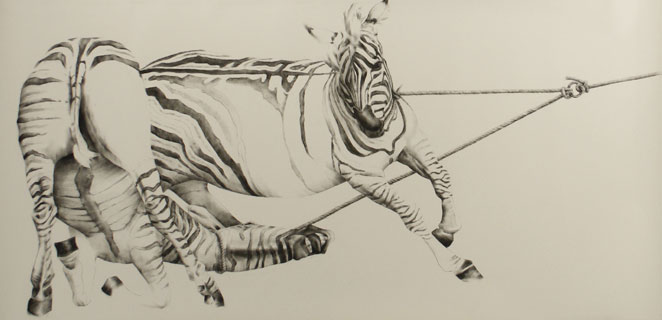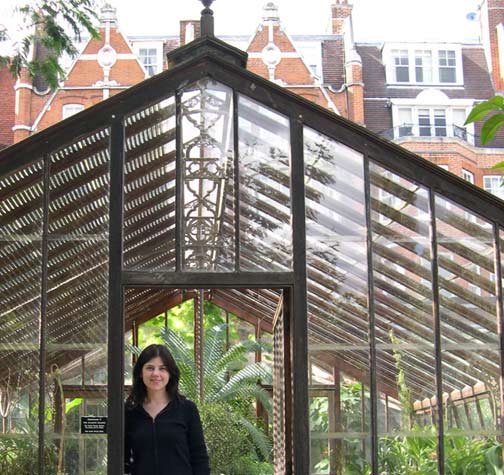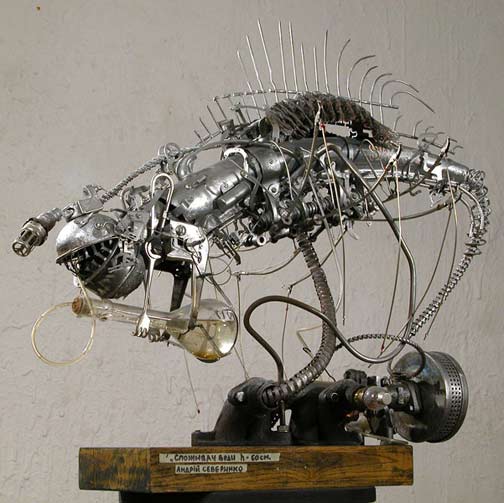
Untitled (zebras) 2006
charcoal on paper
Julie Comnick
Yesterday I dropped by Julie Comnick’s new show at the Flashpoint Gallery in DC (Jan 4 – Feb 9). I say “dropped by” because, despite her obvious technical skill, my attention was fully engaged for only about five minutes. It’s a solid show, but it didn’t provoke me to the kind of reconsideration & reflection I demand from art on a scientific theme.
Here’s the press release:
In According To Their Kind, Julie Comnick’s exhibition of large-scale charcoal drawings, the artist explores issues of selective breeding and the human impact on the course of evolution. The installation at the Gallery at Flashpoint is comprised of five distinct series of drawings: quotations from the story of Noah’s Ark, depictions of animals paired and bound for breeding, tethered boats (arks), excerpts from modern reproductive medicine and magnifications of in vitro fertilization procedures. The juxtaposition of these images asks the viewer to consider several unsettling trends in contemporary society. While animals are selectively bred in captivity to revitalize endangered populations, humans are able to pre-select the genetic makeup of their children.
Did you catch all that? This show was, despite the small exhibition space, really five shows in one. All of the pieces are “untitled,” and they were so disparate it was difficult for me to take in the entire show as curated.
The grouping that flows best is the series of thirteen small framed drawings depicting the stages of an embryo created by in vitro fertilization. The broad strokes of charcoal suited this series remarkably well. That really is how an embryo looks through a light microscope: black and white, smudgy and grainy, against a stark white field. The careless tumbling of the round embryo from corner to corner of the field throughout the series of drawings successfully conveyed both the unpredictable randomness of development – will this embryo implant, or fail? – and a sort of playful geometric abstraction. I think they’re lovely, and at only $250 apiece, quite the steal.
Continue reading →








